This article highlights the differences between trading and investing and explains that both can be used together or separately.
Trading is taking short-term positions with the goal of profiting from short-term price fluctuations. Investing is taking a long-term position to benefit from the growth or price appreciation of an asset.
I personally consider trading as a source of income, and investing as a tool for long-term wealth generation. Although, you can certainly trade your way to a larger account which could increase your wealth as well.
The article aims to provide guidance on how to learn both trading and investing to maximize returns.
Investing and Trading Time Frames Differ
The main difference between investing and trading is the time frame of the transactions.
Trading involves short-term transactions, usually lasting minutes, days, weeks, or months.
Investments are often held for years.
Traders focus on short-term price fluctuations and try to profit from them by getting in and out of trades quickly. On the other hand, investors are more focused on long-term price appreciation and are less concerned with minor day-to-day and week-to-week price changes.
The Difference Between Investing and Trading Returns
The returns from trading and investing can vary greatly, as traders have the ability to make more trades and quickly compound their gains (or losses). Predicting future profits is not possible, but it’s essential to understand how traders and investors generate returns.
A trader who is successful can increase their profit on every winning trade. This can lead to potentially higher returns than investing.
If a trader invests $10,000 and earns a 10% return ($1,000), on their next trade, they have $11,000, and if they repeat the 10% gain, they earn $1,100 and have $12,100 for their next trade. This is called compounding.
Investors also follow a similar process, but since trades tend to last for years, the compounding is slower. There is no set benchmark for traders’ returns, but a skilled trader can earn a significantly higher percentage return than an investor.
Historically, investing in an ETF tracking the S&P 500 has resulted in an average return of 10.5% per year over the last 100 years. Returns vary by asset. Bitcoin, for example, has delivered an average return of 108% per year from 2013 to 2023, despite its significant price fluctuations. The Nasdaq 100 has averaged 13.53% over the last 20 years.
While a good trader can generate higher returns, there are times when simply holding an asset and investing can result in substantial gains as well.
Different Types of Investing and Trading Styles
Traders can be divided into four main categories based on the length of time they hold a trade:
Position Traders, Swing Traders, Day Traders, and Scalpers.
- Position Traders hold trades for months. They generally look to capitalize on large trends in the price, capitalize on overall favorable market conditions, ride the positive momentum of a stock based on recent earnings, or they may hold stocks through earnings announcements hoping to capitalize if earnings are favorable (this can backfire if the stock plummets on bad news).
- Swing Traders take trades lasting days to months. They are capturing short-term trends in price.
- Day Traders hold trades lasting minutes to hours. They are out of positions by the end of the trading day. They don’t hold positions overnight.
- Scalpers are day traders, but they may be taking trades that last only seconds or minutes.
Different traders prefer different trading styles, depending on their preference for fast or slow action.
Investors can also be divided into three main categories: Passive Investors, Value Investors, and Growth Investors.
- Passive Investors hold assets for a long time, often using stock market index ETFs or real estate. They are passive because they don’t get in and out of positions. They simply buy certain ETFs, stocks, or assets at regular intervals and hold them until nearing retirement.
- Value Investors buy assets at a “cheap” price relative to prior prices or perceived value. They hunt for deals, stocks or assets that are “on sale”.
- Growth Investors focus on buying the stocks of companies that are growing, believing that the price will rise over time if the company continues to grow.
There is also a difference between which markets attract traders and investors.
- Investors primarily focus on stocks, bonds, real estate, and other alternative markets where they can simply hold the asset for a long time. Even cryptocurrencies can be attractive plays for long-term investors.
- Traders are involved in stocks, forex, futures, and options. Futures and options have an expiry date. This means they aren’t typically used by investors.
The Difference in Time Commitment for Trading Vs. Investing
Trading can potentially result in higher returns, but it also requires more time compared to investing.
Day trading and scalping require the most time as they need to be conducted daily to find new trades.
Swing and position trading also require time spent each week or month to find suitable trades.
Growth and value investors only need to analyze the market periodically, as the trades can be held for years.
Passive investors spend the least time as they simply invest in their selected assets and let them sit.
The amount of time you have is a factor to consider when deciding to become a trader or investor.
How Trading and Investing Are Similar
Both trading and investing have similar characteristics, including the ability to generate compound returns, they both require a skill set, they require sticking to a plan, and both have the potential to beat inflation.
Both trading and investing require a strategy to guide what to buy, and when. Generally, the more you trade, the greater the skill and practice required to generate consistent profits.
The ability to stick with a plan is a crucial mental skill, and deviating from it can result in losses.
Both trading and investing can provide returns that surpass the average inflation rate of 2-3% per year (which can fluctuate as well, and has been higher in recent years).
Trading vs Investing: Dividends
Dividends are cash payments provided by a company to its shareholders.
Traders may receive dividends if they own a dividend-paying stock on the day before the ex-dividend date. They receive the cash on the payment date.
Note that on the ex-dividend date, the stock typically drops by the per-share amount of the dividend (all else being equal, as there are many factors that affect the stock price). Therefore, for short-term trades, the dividend doesn’t really matter. It doesn’t affect the overall profit of the trade.
For investors, dividends can contribute to long-term returns…IF the dividends are reinvested. If you just take the money and don’t reinvest it, your annual return in the S&P 500 over the last 50 years drops to 7%. If you reinvest the dividends, the return is 11.1%. The difference is the result of compounding. Reinvest those dividends if you’re an investor.
Check out the Best Long-Term Dividends Stocks List.
Trading Vs. Investing: Leverage
Traders and investors often use leverage to increase the potential returns on their investments or trades. Leverage refers to borrowing money to invest or trade, which amplifies the returns, both positive and negative.
For example, a trader might use a margin account to trade stocks, which allows the trader to buy more stock than they would be able to purchase with their own capital. This increases the potential returns if the trade is successful, but may increase the risk if the trade is not successful.
For short-term trades, I am comfortable using leverage. Using leverage on stocks typically requires paying interest on the amount borrowed if holding positions overnight. Since my aim is to make a decent percentage profit in a short amount of time, borrowing costs are negligible. And if the trade doesn’t do what I expect, I get out immediately using a stop loss order. Leverage used improperly can be devastating, so understand it and use it with caution, even on short-term trades.
If you use leverage on long-term trades, make sure that the average return of the strategy or investment you are in outpaces the cost of interest charges you are paying.
If opt to use leverage for investing, use minimal leverage. Less than 2:1.
Why? If you have $100,000 and use 2:1 leverage you will be able to invest $200,000. But if the stock market falls more than 50% (which it has, four times since 1930) you will get a margin call from your broker. Your portfolio value may drop to $95,000 during the decline, yet you have an outstanding loan for $100,000. The broker will want you to deposit at least $5000. Avoid that by using very minimal leverage, or no leverage at all.
Of course, that decision is ultimately up to you.
How to Combine Investing and Trading, Do Them Both
I trade and invest.
I day trade stocks and/or forex, I swing trade stocks and/or forex, and I also invest in stocks and some alternative assets.
I like doing them all and that is how I make my living.
At a minimum, I think everyone should at least do some passive investing.
If you are interested in day trading or swing trading (including position trading or scalping), then make sure you have the time and capital to pursue it. But first, you should take some time to decide how you want to trade, what market interests you, and what your goals are.
Once you have that information, you can start digging into information on specifically those topics.
There are some trading and investing strategies discussed below.
I use my day trading and swing trading to generate profits. I then typically pull the profits out of my account each month. If you want to grow your account, you can keep your profits in there.
I take part of my profits and invest it, each month. Essentially, some of my short-term profits are funneled into my long-term investment account. This makes sure that I have a nice nest egg for if I ever decide to quit trading.
Also, I like that my investments are always growing in the background, at about 10% per year or more, with almost no effort on my part. Trading on the other hand requires work; I need to get out there and make money.
That’s how I do it, but you can of course combine your trading and investing however you like.
Trading and Investing Tax Differences
In the US, the tax treatment of trading and investing profits can vary.
Trading profits are generally considered short-term capital gains and are taxed as ordinary income. The tax rate for short-term capital gains is the same as your marginal tax rate, which can range from 10% to 37% depending on your income level.
Investing profits, on the other hand, are considered long-term capital gains and are taxed at a lower rate than short-term gains. For tax year 2023, the long-term capital gains tax rate ranges from 0% to 20% depending on your income level.
It’s important to note that the determination of whether a profit is short-term or long-term is based on how long the investment was held. If an investment is held for less than a year, it is considered a short-term gain. If it is held for more than a year, it is considered a long-term gain.
It’s also important to consult with a tax professional to understand the specific tax implications of your trading and investing activities, as the tax code can be complex and there may be additional factors to consider.
In Canada, there are also tax differences between trading and investing profits.
Investing profits, such as those from holding stocks or bonds, are taxed as capital gains. Capital gains are taxed at a lower rate than regular income, with 50% of the gain being taxed as income.
Trading profits, on the other hand, are considered income and are taxed as such. This means that the full amount of the profit is included in the taxpayer’s taxable income and is subject to their marginal tax rate.
It’s important to note that the Canada Revenue Agency (CRA) has specific rules regarding the distinction between trading and investing, and the tax implications of each. In some cases, the CRA may classify someone as a trader even if they consider themselves an investor, which can result in a higher tax bill. It is recommended to consult a tax professional or financial advisor to determine the correct tax treatment of your investments.
Investing Strategies
For my own investing, I keep it pretty simple. I mainly stick to index ETFs and I buy I little bit each month. I cover my own whole passive investing approach in the Passive Investing Using ETFs eBook.
Every couple of months I also update my Top Buy & Hold Stocks list. These are stocks that are strong fundamentally and growing, which means they may be good stocks to consider for long-term holds.
Trading Strategies
Here are some of my favorite swing trading strategies for stocks:
- Double Consoldiations – Occurs as the price is starting to rise after a pullback.
- Triangles/Contractions – Occurs during an uptrend and can result in quick large price moves when the pattern breaks.
- TATR Strategy – This is for capitalizing on high-momentum stocks with a trailing stop loss.
- Cup and Handle – A common chart pattern that occurs as the price is recovering from a big decline.
- Trend Channel strategy – Capitalizing on rhythmic movements while price moves in a channel.
If you are interested in day trading stocks:
- Trend Strategy for Stocks – a way to capitalize on strong trends when day trading stocks.
If you are interested in day trading forex:
- Double Pump strategy: a trend continuation pattern.
- Day High/Low strategy: capturing profits near the high or low of the day.
- Snap Back strategy: another trend continuation pattern.
If you are interested in full trading courses and learning everything you need from one resource:
- Swing trading stocks: Complete Method Stock Swing Trading Course.
- Stock day trading: Price Action Stock Day Trading Course.
- Forex day trading: EURUSD Day Trading Course.
- Forex swing trading: Forex Swing Trading Course.
Final Word on The Differences Between Trading and Investing
There are similarities and differences between trading and investing.
I don’t think everyone needs to be a trader, but I do think everyone should at least passively invest some funds. Most employers have plans where you can contribute to a retirement/investment plan. Take advantage of that.
Passive investing is like a saving plan on steroids. The market does move up and down, but over the long run, it has produced more than 10% per year (if investing in something that tracks the S&P 500…pick the lowest fee option).
As for trading, it can provide great returns but it takes more work, skill, and practice.
I do both, and if you are interested in that, check out the free articles on this site (use the menu to see articles on the style of trading you are interested in).
Trading Vs. Investing FAQs
Here are some commonly asked questions about trading vs. investing.
What is the difference between trading and investing?
Trading refers to buying and selling financial assets with the goal of making short-term profits, whereas investing involves buying assets with the intention of holding onto them for a longer period of time to earn long-term gains.
Which one is better, trading or investing?
Neither is inherently better, as it depends on an individual’s financial goals, risk tolerance, and personal preference. Some people prefer the daily routine of trading regularly, possibly as a career, while others prefer the stability and long-term gains from investing.
What are the risks involved in trading and investing?
Both trading and investing come with risks. For traders, the risks include the possibility of losing money due to market volatility and the need for quick decision-making. For investors, the risks include the possibility of losing money due to market downturns or the investment not performing well.
How much time and effort does each require?
Trading can be a more time-intensive endeavor, as traders need to continuously monitor the markets and make quick decisions. Investing, on the other hand, typically requires less time, as the focus is on holding onto assets for a longer time.
What is the minimum amount of money required to start trading and investing?
In most cases, you can start trading or investing with as little as $100. The amount of money needed to start trading and investing can vary depending on the broker and the type of trading or investing you want to do. Be aware of trading commissions which can deplete returns rapidly on a small account.
Can I do both trading and investing simultaneously?
Yes, some individuals choose to engage in both trading and investing as part of their overall financial strategy. This allows them to take advantage of the benefits of both approaches.
By Cory Mitchell, CMT
Disclaimer: Nothing in this article is personal investment advice, or advice to buy or sell anything. Trading is risky and can result in substantial losses, even more than deposited if using leverage.


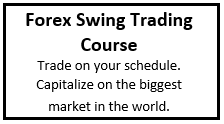
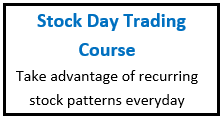
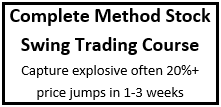
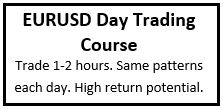
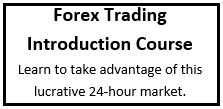
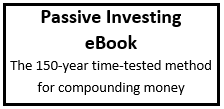
1 Comment
Leave your reply.